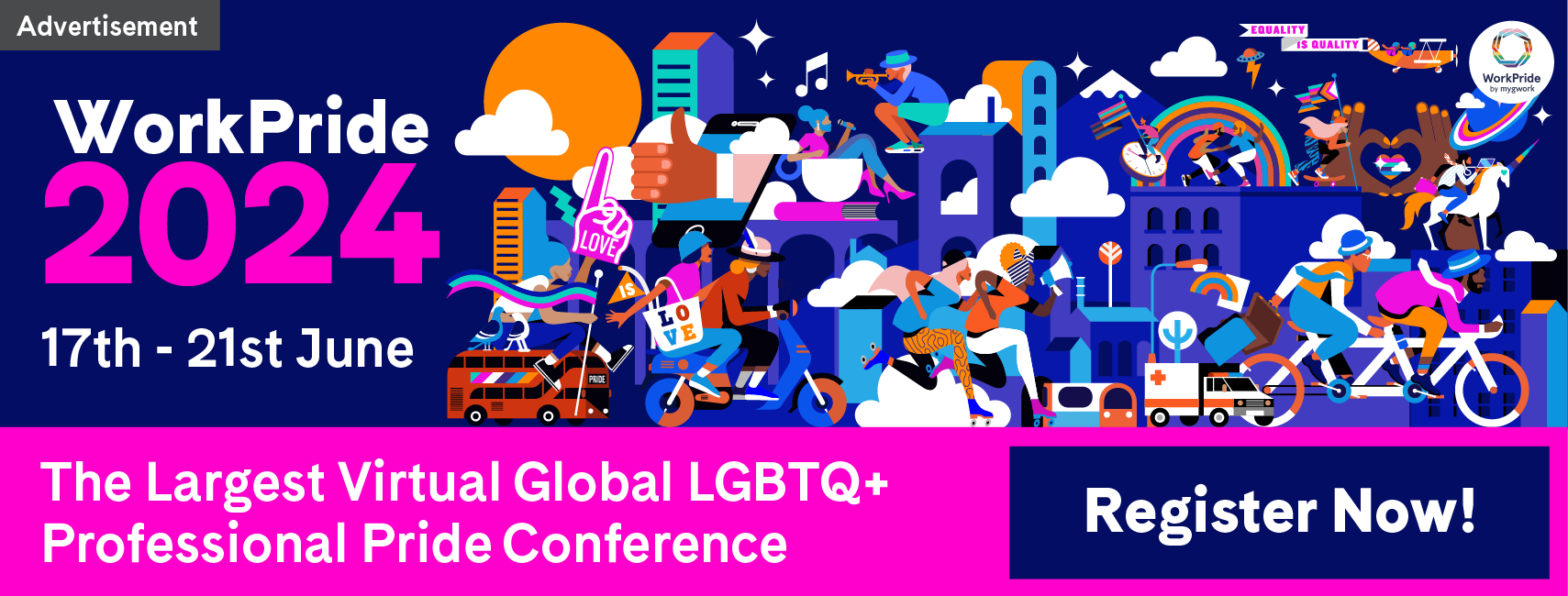Why the Fight for Climate Change Plays a Key Role in LGBTQ+ Culture
This week, on Friday April 22, we celebrate Earth Day. Here we explore why the fight for both humankind and for our planet has always played an essential role for the LGBTQ+ community.
"Right now we are the ones who are making a difference. If no one else will take action then we will," said the young Swedish environmentalist Greta Thunberg. "It should not be that way. We should not be the ones who are fighting for the future.”
We are all fighting for something. Whether it be for equal rights, against homophobia and discrimination, climate change, or if the fight is coming from inside of us.
The LGBTQ+ community is no stranger to the importance of allies, knowing well that we fight better when we fight together. As for the LGBTQ+ community, so for every other community, the presence of allies can really make a difference.

It makes sense to say that activists for any cause who fight for humankind, like the LGBTQ+ community, are directly linked to those who fight for our vibrant planet, like any environmental activist.
The fight for both humankind and for our planet has been a big part of the LGBTQ+ community and culture, from the green stripe on the Pride flag to Harvey Milk’s environmental sustainability fight.
Politicians who are described as more openminded, tend to have these two causes in common, as ‘The Proud Diplomat’ states:
“LGBTQ+ rights alongside ideas about environmental stewardship and combating climate change tend to be championed in large part by more progressive, socially liberal politicians, which in turn puts these ideas under an oftentimes shared ideological umbrella.”
It continues, “Even iconography in queer communities has ties environmental movements, like the green stripe of the pride flag. The green stripe was specifically denoted to represent nature, likely in both terms of our sexual and gender identities being natural, as well as the more literal support of the environment.
“San Diego sustainability consultant, Kathleen Connell wrote a particularly keen article on both the importance of the environmental movement to the community, and the way community leaders like Harvey Milk championed environmental sustainability alongside his fight for gay rights.”

This is supported by Kathryn M. Werntz writing for ‘The Guardian’ who states: “Personal commitment to environmentalism is more pronounced in the US LGBTQ+ community than in the heterosexual population, according to a 2010 Harris poll".
Although these points may be true, it looks like they are only partly true. Some argue that the LGBTQ+ community is actually divided, with LGBTQ+ environmental activists representing only one part of the whole community. Jay Michaelson, writing for ‘The Daily Beast’, describes two ‘types’ of LGBTQ+ people.
“The first is basically liberal and seeks to win incremental victories, gain equal rights, and more or less assimilate into the mainstream of American society. Think same-sex marriage, #loveislove, and other messages that LGBT people are basically just like everyone else and should be treated the same.
“The second group is more radical. It doesn’t want to assimilate into the mainstream, it wants to transform it. Think sexual liberation, 1970s groups like the Gay Liberation Front, and slogans like “Smash the church/Smash the state. It’s this second group that sees LGBTQ+ liberation as intersecting with other liberation struggles, those based on eradicating racism, classism, sexism—and climate change.
“To a ‘radical queer’, caring about climate change is an essential part of queer identity. It expresses solidarity with the oppressed—which in this case may include almost everyone—opposition to the one percenters who got us into this mess, and a righteous indignation nourished by decades of LGBTQ+ activist experience.”

The LGBTQ+ community has identified a time and a place for their fight for equality, a place where they feel safe and their voices heard. Pride. If all of the LGBT+ community uses Pride events as it’s weapon, it can coexist as one with the environmental activism community to fight together.
LGBTQ+ environmental group ‘OUT for Sustainability’ writes, “Since Pride is the biggest moment of the year for the international LGBTQ+ community, this is the place and now is the time to see it showcase the best in our community, especially our environmental responsibility.”
They also write, “We believe that Pride can be a celebration of our best selves, and a challenge to the world to do better along with us. We believe Pride can become plastic free and we aren’t going to stop until it is.”
“It was hard to earn equal rights, so doing right by our home planet should be easy.”
‘Sustainable Millennial’, shares some advice on how to make Pride equally enjoyable, as well as more eco-friendly. Contributor Margaret Cyr’s advice for taking part in Pride includes wearing sustainable clothes, not using balloons or glitter unless they are biodegradable, going on foot, biking or using public transit, choosing reusable containers instead of single-use plastic, and saying no to offered leaflets and other material that would go unused.

As simple as these measures may seem, they are of extreme importance, especially for the LGBTQ+ community. Unfortunately, the people firstly and most rapidly impacted by climate change will be those without sufficient housing, a group in which LGBTQ+ people are overrepresented.
Aletta Brady, Anthony Torres and Phillip Brown in their article ‘What the queer community brings to the fight for climate justice’ state, “Consider that 40 percent of U.S. youth who experience homelessness identify as LGBTQ+, even though they represent just 7 percent of the population.
“Moreover, Queer and trans people are concentrated in coastal cities such as Miami, New Orleans, New York and San Francisco at high risk for sea level rise and increasing storm surges. As the planet warms, more frequent and severe storms, wildfires, and floods will exacerbate these vulnerabilities, and our people will be among the first and worst hit.”

This argument is supported by Edwin Nichols, writing for ‘Greenpeace’, on how three LGBTQ+ survivors of Super-Typhoon Haiyan (Yolanda) in the Philippines felt climate change hit the LGBTQ+ community.
“Their experiences show that in this current climate crisis we need allies and partners working in true partnership. We need to shift the power from those few individuals, to the people most affected by climate change because we cannot have a clean and green, rainbow and loving planet without human rights and justice for all.
“The people at Stonewall used strength, resilience, and the beauty of community because they knew they were not alone. One small act can change the world – never underestimate your own power.”
As Noah Goodwin writes for ‘GLAAD’ “First and foremost, it’s important to understand that everyone will feel the effects of climate change. It might be felt differently by everyone, it might hit some people more slowly than other people, but everyone will notice a change in the way we live our lives due to the overexertion of our resources.”

With the steps forward that the LGBTQ+ community has taken in the past years, it has become a good example of how people working together for a fair and good cause, can achieve much. Saving the planet should be first on the list.
Organizations such as ‘OUT for Sustainability’, ‘Gay Games’ and ‘Queers for the Climate’ also provide great resources on how we can all join this fight to save our planet.
Keep up to date with the latest myGnews

